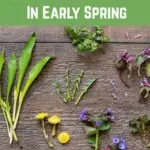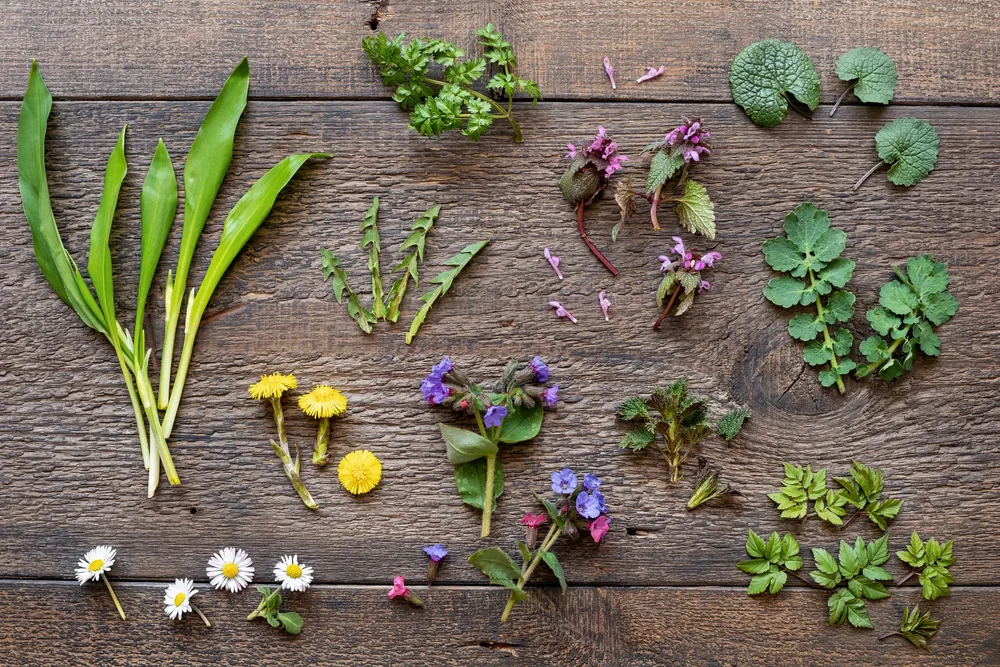
As the first signs of spring arrive, and winter fades into the rear view mirror, you will likely be busy planting many of the crops that will sustain you for the rest of the year.
This time of year, after winter stores are almost depleted and before this year’s crops are ready, is traditionally known as the ‘hungry gap’.
Foraging for edible wild plants, however, can help you fill that gap. Wild greens can be an important source of nutrients at this time of the year.
In this article, we’ll take a look at 25 common edible wild plants that you can look for around this time.
Many of them you might even find right there on your very own property. Of course, the plants you find will depend on exactly where you live. But you should find some edible wild plants wherever you may be.
Tips For Foraging
Before we begin, here are a few tips to help you stay safe and forage sustainably:
- Never eat anything that you cannot be 100% certain you have identified correctly.
- Think about potential contaminants. Don’t eat anything that may have been treated or from near sources of pollution. Try to find foods as far from human activity as possible when out and about in the countryside or the wilds.
- Check the rules on foraging where you live. (Rules and laws vary. Sometimes, foraging for personal use is permitted on public land, sometimes it is prohibited.)
- Always ask permission from the landowner before foraging on private land.
- If you are allowed to forage, never take more than you need. Wherever possible, leave root systems in place, taking only small, sustainable amounts so the plants can continue to grow. Try to only forage from abundant wild food sources.
- When you are out foraging, take care to respect and take care of the ecosystems you are passing through. Cause no damage, and leave no litter behind.
Now, let’s take a look at what you might be able to forage in early spring:
1. Stinging Nettles (Urtica dioica )
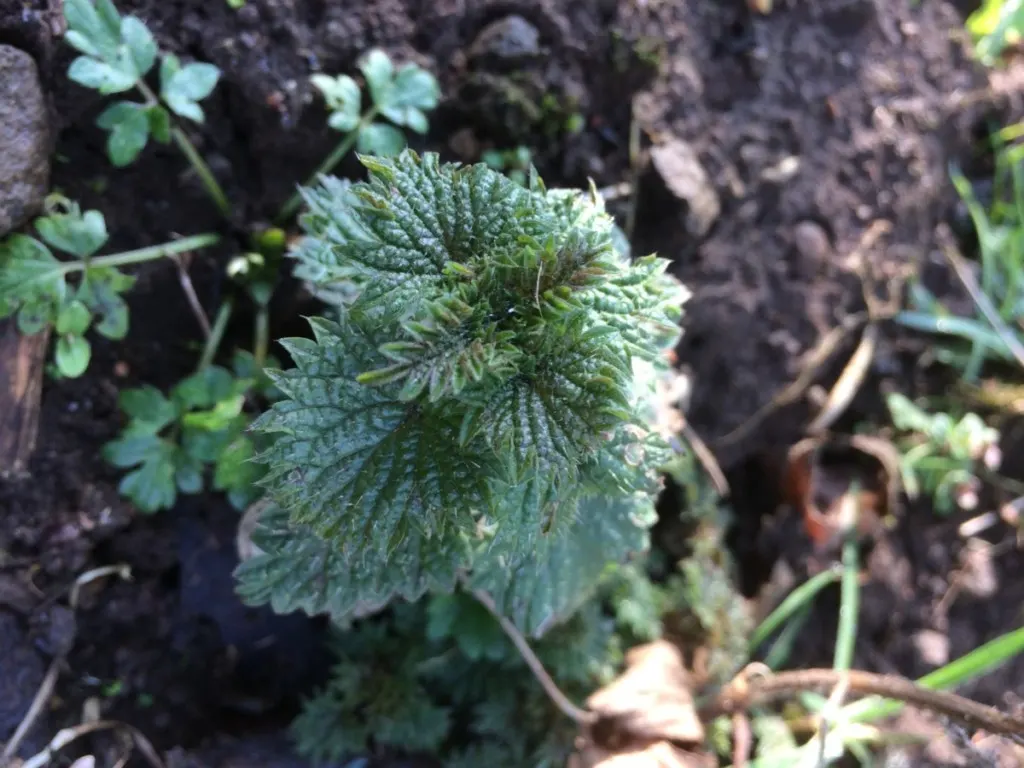
Stinging nettles may not be everyone’s favourite plants, but they are one of my very favourite forage foods. Everyone can recognise them, and they are pretty ubiquitous, so they are a great place to begin if you are new to foraging.
They are also incredibly useful. This common garden weed is a delicious spring green – especially early in the year when the fresh, young, tender leaves form. And they have plenty of other uses too.
Nettles can be used to make:
- A spinach substitute in a wide range of recipes. (They have a spinach-like and slightly sweet flavour that really does taste great.)
- Nettle soup – here’s a great recipe from Rural Sprout author, Tracey.
- Nettle chips.
- A nettle beer.
- Nettle tea (for yourself).
- A nettle tea (for your plants – a nitrogen rich liquid plant feed).
- Plant fibres for paper and fabric making.
- A green natural dye.
Grab a pair of gloves and pull off the tips of the plants. For edible uses, you’re looking to harvest the top five leaves or so from each stem (which is the best, most tender part). Run the nettles carefully under running water, then place them in a large pan and boil them. As soon as they have been boiled, they completely lose their sting and you can use them in a range of recipes.
How To Forage for Stinging Nettles @ onegreenplanet.org.
2. Dandelions (Taraxacum)
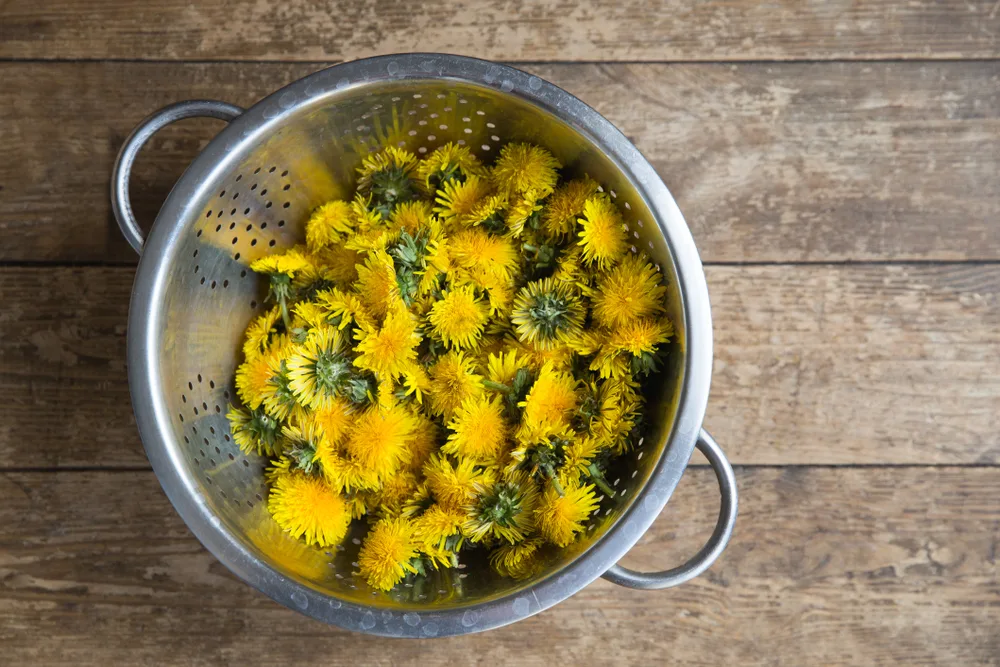
Dandelions are another foraging favourite. These too are an easy plant for beginners to forage. They are widespread and easily recognisable.
In early spring, the flowers may not yet have appeared. But the young leaves can be used for salads. They are rather bitter but can be a good addition to mixed salads with milder leaves.
Here’s a great recipe for making stir fried dandelion greens.
You can also use the roots. Dandelion roots can be harvested to use as a coffee substitute.
Dandelion coffee @ practicalselfreliance.com.
You can also cook the roots by steaming them or boiling them and serving them as you would another root vegetable.
Once the dandelions start to flower, the roots shrivel up somewhat, so if you want to harvest the roots, early spring is the time to do so.
Read More: 16 Exciting Things To Do With Dandelion Flowers
3. Wild Garlic/ Wild Leeks/ Ramps/ Ramsons (Allium ursinum/ Allium tricoccum)
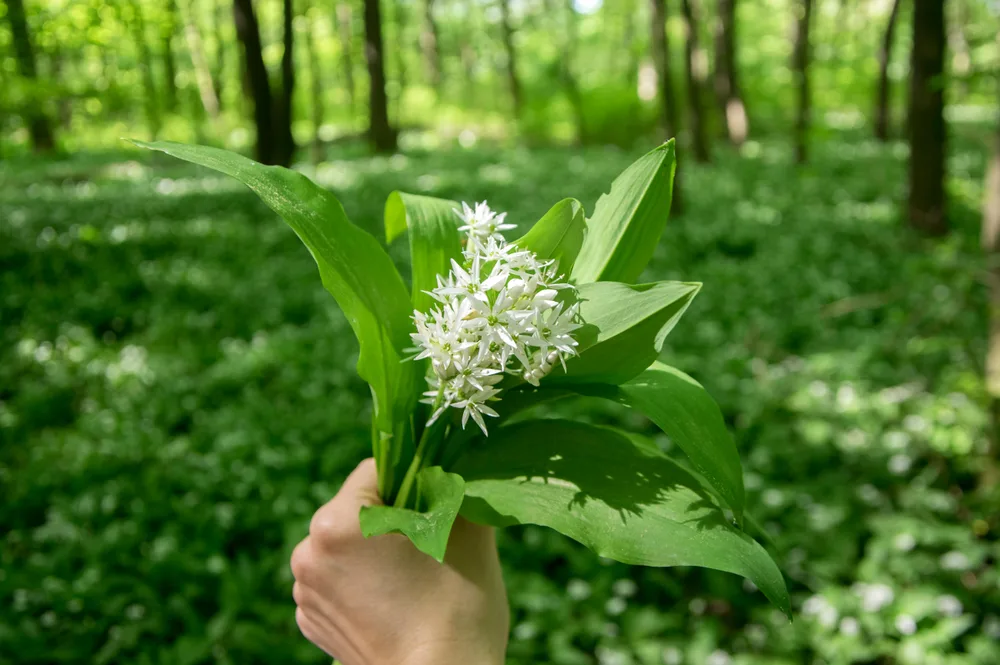
Ramps is a name used to refer to several different plants. In Europe, ramps is another name for wild garlic, Allium ursinum, or bear garlic.
This is a common woodland edible, which is usually fairly easily identifiable, if not by its appearance, then by its strong garlic smell. The leaves are usually harvested and the bulbs left where they are.
One note of caution, however, is that this plant resembles Lily of the Valley (Convallaria majalis) which is poisonous.
Check out our wild garlic foraging guide and photos to find out more about how to identify this plant correctly, and how to use it.
In many parts of the US, however, ramps is used to refer to wild leeks, Allium Tricoccum. This plant is much more prevalent than bear garlic and more commonly found in woodlands here.
Like bear garlic, the leaves of wild leeks also have an onion-like smell. However, the leaves of this plants resemble leeks more than garlic, and the unfolding leaves in spring have a mild, sweet flavour. The small bulbs can also be used, in salads and a wide range of savoury dishes.
Check out this link to find out how to forage for wild leeks sustainably:
Foraging Ramps @ wildedible.com.
4. Garlic Mustard (Alliaria petiolata)
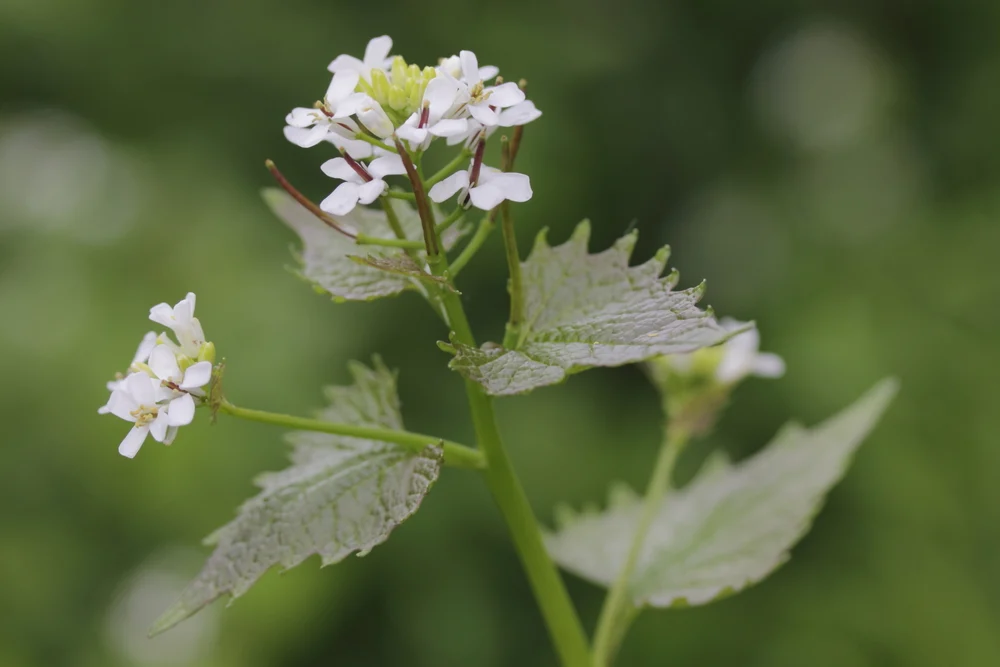
Garlic mustard is a native in Europe, but is an invasive species in the US – all the more reason to get foraging.
In fact, here are a number of reasons why you should start eating this invasive plant.
This is a treat to native woodlands and forest species there, but the good news is it tastes great. In spring, you can harvest the leaves and the young stems. The leaves are a cross between garlic and bitter mustard greens, and the stems resemble garlic scapes.
By eating this plant in the US, you can do your part to control it, while in its native range, you can simply enjoy it as another wild edible.
Garlic Mustard Pesto @ RuralSprout.com
5. Ground Elder (Aegopodium podagraria)
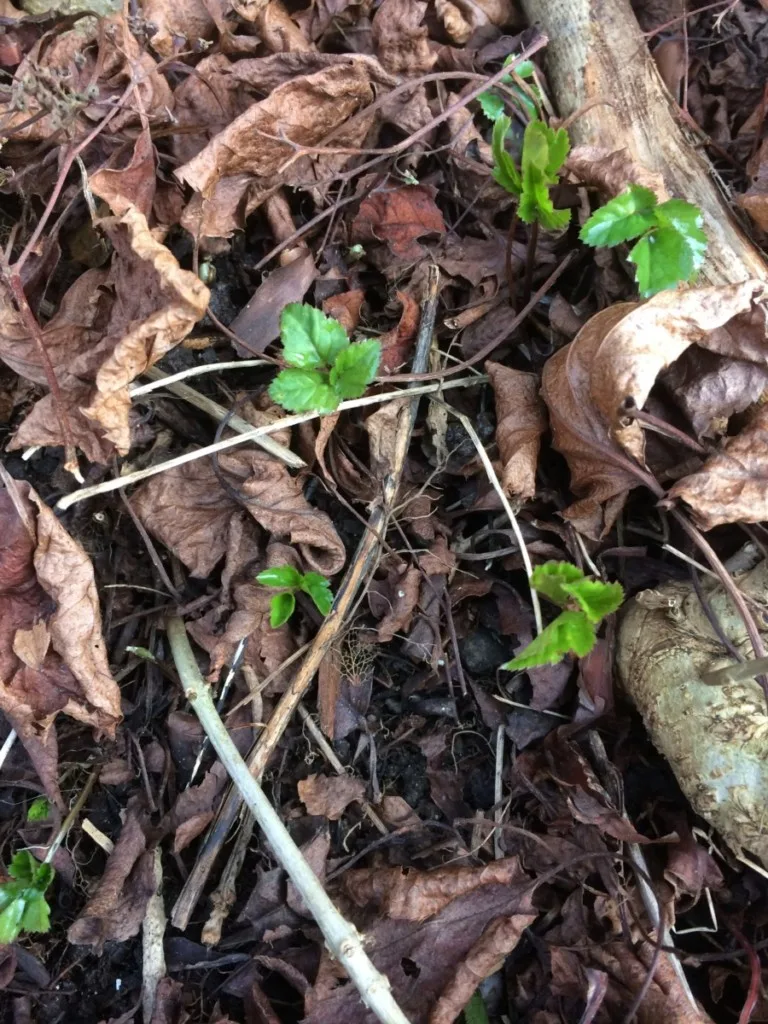
This plant, ground elder, is another non-native invader in parts of the US, and can be an annoying weed wherever it grows. Even within its native range it is considered by gardeners to be a troublesome weed. Once established, it is difficult to eradicate. But this is another weed or wild plant that can controlled by eating it.
Some people are put off eating this wild edible because they try a mature leaf, and do not care for the rather strong and unusual taste.
But here is the trick – pick the leaf shoots when they are very young, soon after they emerge in the spring and before the leaf has even unfurled.
Pick the leaf stem as low down as possible – this is the main part you want. Then simply stir fry it in olive oil to bring out its pleasing flavour.
Young leaves have a parsley like flavour and can also be used as a pot herb. Nip off flower heads as they form to keep the seeds from forming, and also to keep the plants producing tasty leaves for longer.
Make sure you have identified this plant correctly, as there are several similar plants that could cause ill-effects. Check out this article to find out more about identifying it correctly.
Ground Elder @ rootstohealth.co.uk.
6. Chickweed (Stellaria media)
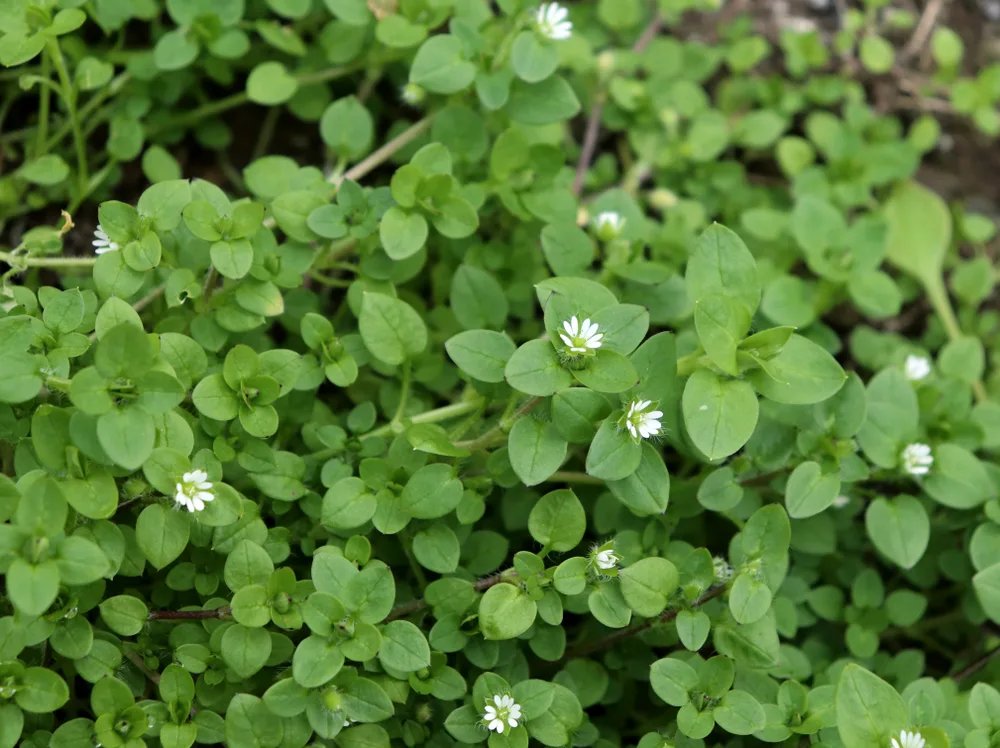
Along with young nettles and wild garlic, this is one of the first wild edible to harvest come spring.
Chickweed is another wild edible or edible weed that takes its name from the fact that it is loved by hens. But it is not just hens that appreciate it. This is another of my favourite edible wild plants to forage for in early spring and the great news is that almost all of us will have some growing nearby.
Chickweed is another abundant weed and can be picked by the handful and added to your spring salads. It has a very mild and pleasant flavour that is not that different from iceberg lettuce. And it has a similarly crisp and refreshing texture.
Chickweed Salad @ ediblewildfood.com.
To find out more about foraging and identifying chickweed, check out the link below:
How To Identify Chickweed @ thegoodliferevival.com
7. Fat Hen/ Lamb’s Quarters (Chenopodium album)
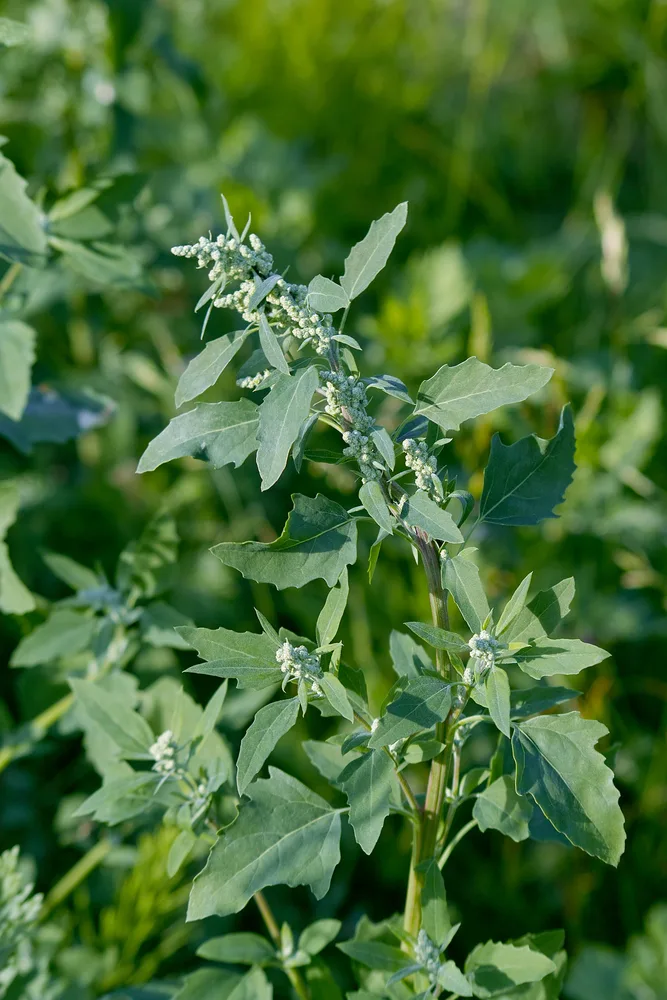
Chenopodium album goes by many names. It is known as fat hen, lamb’s quarters, and a number of other regional names.
In spring, the young leaves of this plant may be eaten raw (in moderation) but are best cooked. They are mild tasting and a little bland, but make a very acceptable substitute for spinach in a range of recipes. This plant is actually eaten as a staple in parts of South America, Asia and Europe. It is in the same plant family as spinach, quinoa and amaranth.
In addition to being a useful wild edible, it is also possible to obtain a dye from the young shoots, and crushed fresh roots are a mild soap substitute (due to saponin content).
Learn more about foraging lamb’s quarters by following this link:
Foraging Lamb’s Quarters @ freespiritfolk.com.
8. Plantain (Plantago major/ Plantago lanceolata)
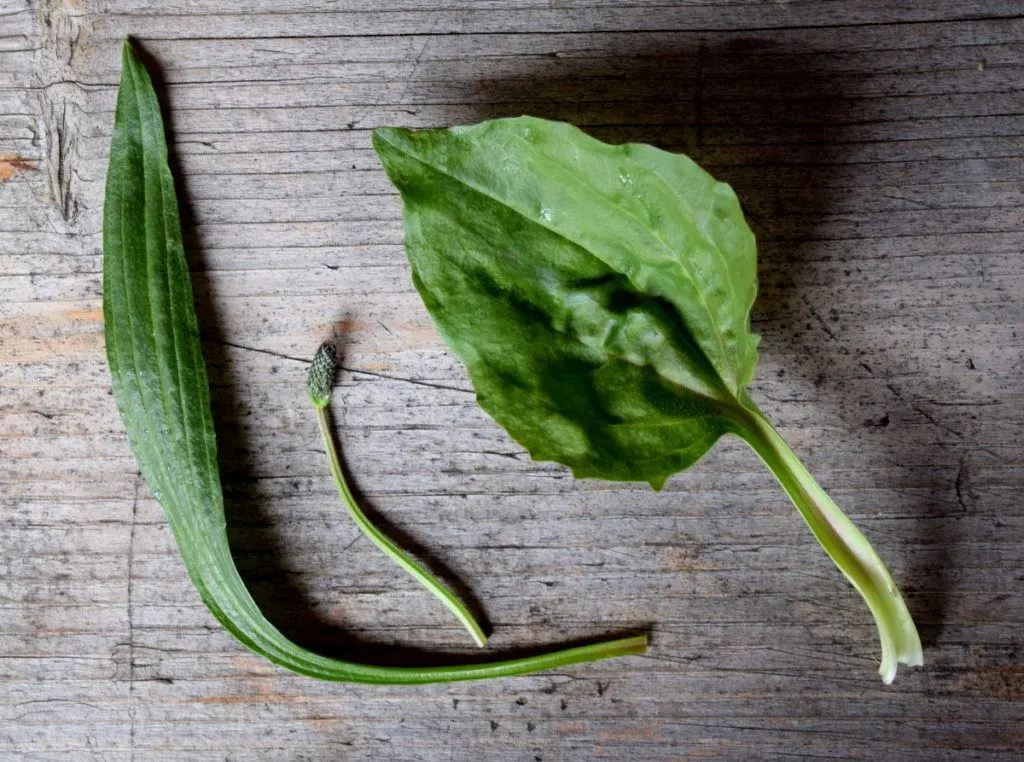
Plantain (not to be confused with the tropical fruit) is a common garden weed and wild plant. The leaves from both broad leaf plantain (Plantago major) and ribwort plantain (Plantago lanceolata) can both be used in a range of ways throughout the year.
Check out this guide on plantain to find out more about the medicinal ways in which they can be used.
As the season progresses, the leaves tend to get tougher. So early spring is the best time to forage for them if you want to put them to edible use.
Very young leaves can be added to salads, and you can also boil or steam the leaves and use them exactly as you would cabbage or kale in a wide range of recipes.
9. Purple Dead Nettle (Lamium Purpureum)
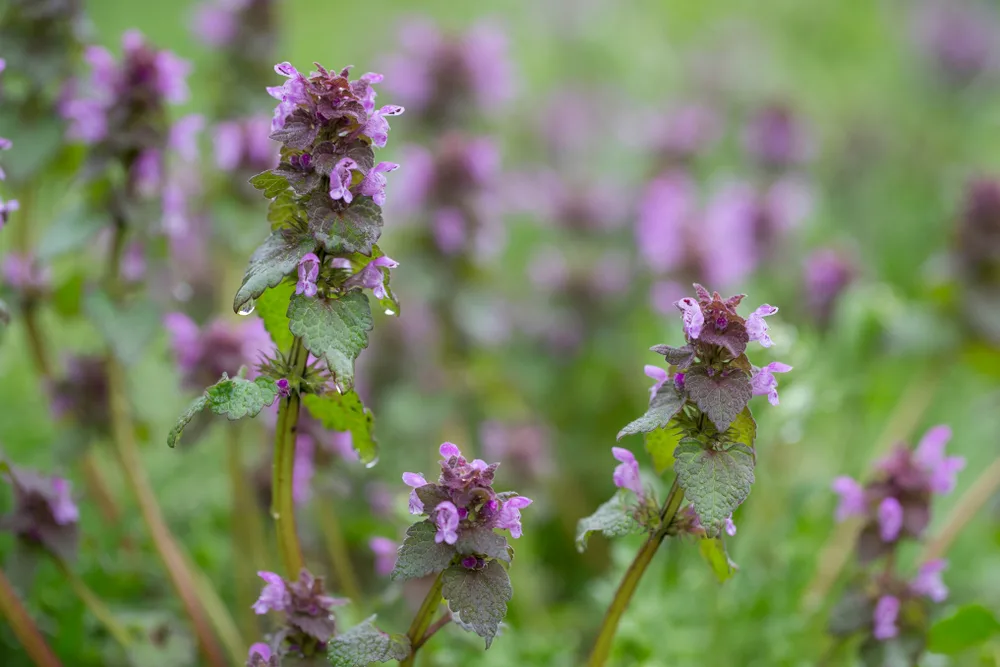
Purple dead nettle, also known as red dead nettle, is another common weed that you can harvest at this time of the year. This is another good edible for beginners to forage because it does not have any dangerous lookalikes. The only thing you might mistake it for is henbit – the next wild edible on this list.
This member of the mint family is an annual that grows in semi-shaded or unshaded places. It is often found as a weed on cultivated land and can also often be found alongside roads. It is native to Europe and Asia but widely found in North America too.
The young leaves can be harvested and eaten raw or cooked as a potherb. The purple tops even have a slight sweetness to them. You can basically use them as you might any other green leaf vegetable or herb.
12 Reasons To Forage For Purple Dead Nettle @ RuralSprout.com.
Purple Dead Nettle Tea @ RuralSprout.com
10. Henbit (Lamium amplexicaule)
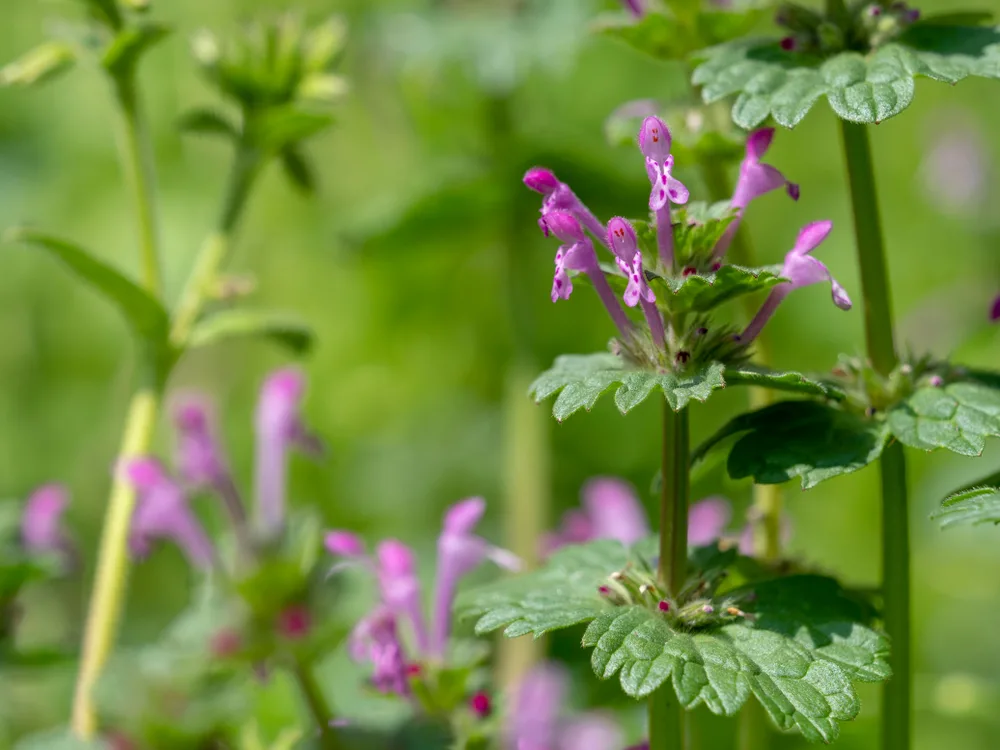
As mentioned above, henbit is sometimes confused with purple dead nettle (and the two plants are closely related). Both are members of the mint family. The main way to tell them apart is by their leaves. Henbit has heart-shaped leaves, while purple dead nettle’s leaves are more triangular in shape. Henbit’s leaves grow along the whole length of the stem, while purple dead nettles frow in clumps.
As the name suggests, chickens love to eat this plant. But it is great for humans to eat too. The mild and slightly sweet leaves work very well in a salad, and like purple dead nettle, they can also be cooked as a general purpose green vegetable, or used as a potherb.
Henbit @ eattheweeds.com.
11. Burdock (Arctium sp.)
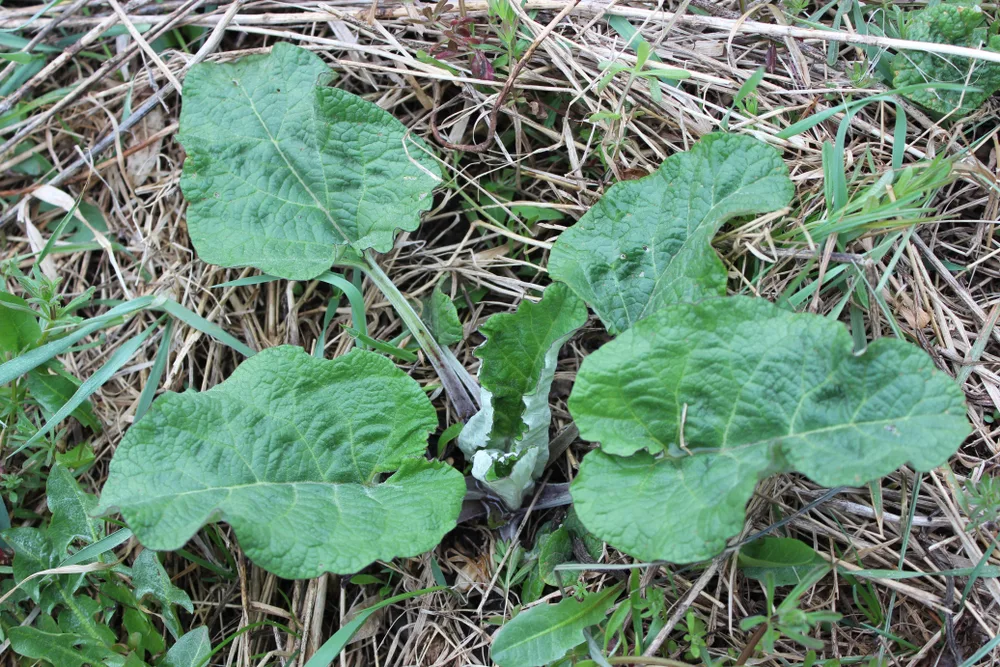
Burdock is commonly used as a herbal medicine. But it is actually a useful wild edible too. Burdock may be most familiar to you as the plant with those annoying little burrs that get stuck to your clothes.
You may have also heard of the drink, dandelion and burdock. But you may be surprised to learn that you can also eat the leaves, stalks and roots.
In very early spring, you can see young burdock seedlings emerging from the soil before much else has sprung up. The leaves are bitter, but can be used as a pot herb and are less bitter while they are still small. Burdock root can also be harvested.
It is a cultivated edible known as ‘Gobo’ in some parts of the world. You can peel it, slice it thin and add it to stir fries, or pickle it like daikon radishes. You can also roast it.
Foraging Burdock for Food and Medicine @ practicalselfreliance.com.
12. Fiddlehead Ferns (Several Species)
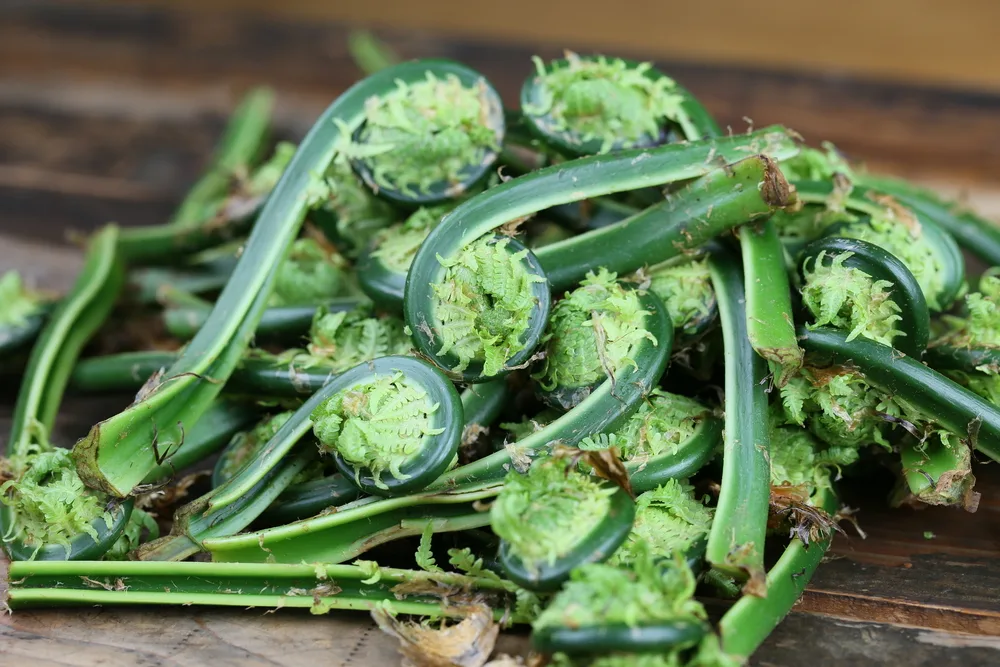
Several species of fern are known for their edible curled fronds, which can be harvested and eaten in the spring. It is worthwhile noting, however, that not all ferns can be eaten, and some carry significant health risks.
Ferns eaten as cooked leaf vegetables include:
- Western sword fern (Polystichum munitum)
- Ostrich fern (Matteuccia struthiopteris) (caution required – but the main fiddlehead harvested in the US.)
- Lady fern (Athyrium filix-femina)
- Bracken (Pteridium aquilinum) (toxic carcinogen if not fully cooked)
Native Americans and several other cultures have long harvested these young curled fern fronds as a wild food. But care should be taken to do your research carefully if you want to forage and eat them.
Fiddlehead Ferns @ thespruceeats.com.
13. Cleavers (Galium Aparine)
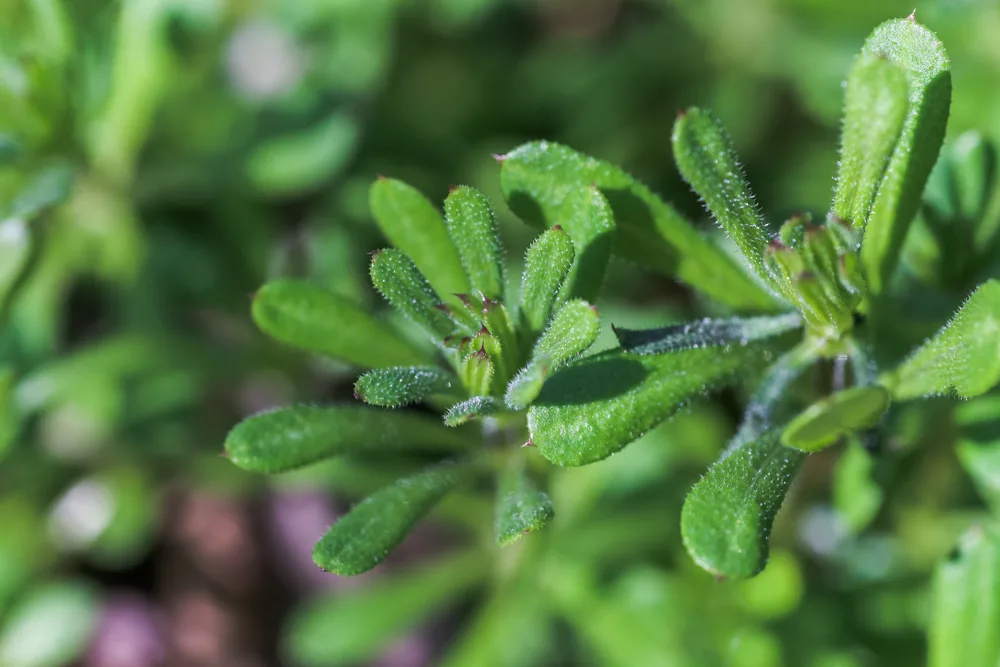
Galium aparine is another wild edible that goes by a number of different names. It is known as cleavers, goosegrass, coachweed, catchweed, stickyweed, stickywilly, and by a number of other regional names.
It is a herbaceous annual plant in the Rubiaceae family. Though it is native to wide region of Europe, Africa and Asia, it is now widely naturalized in North America and other places outside its native range.
There is a note of caution that contact with this plant can cause contact dermatitis for a few susceptible people. But in general, it is edible.
Early in the spring, the plants will not yet have developed as many of their unpleasant clinging or sticky hooks. The leaves and stems can be nibbled raw, but are best cooked as a green leaf vegetable. We like to use them in stir fries.
Later in the year, they are less appealing as a green vegetable, due to their hooks. But these are in the same family as coffee, and later in the year the fruits can be dried, roasted and used as a lower caffeine coffee substitute.
Galium Aparine @ eattheweeds.co.uk.
14. Miner’s Lettuce (Claytonia perfoliata)
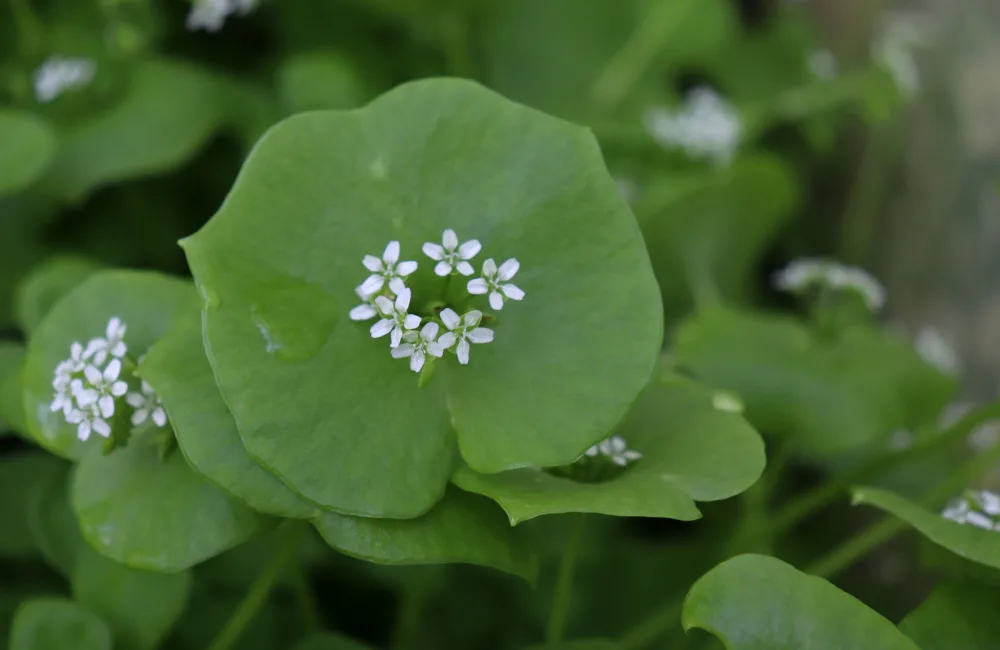
Also known as spring beauty, Indian lettuce or winter purslane, Claytonia perfoliata is a herbaceous annual native to the western mountain and coastal regions from southern Alaska to Central America. It is most common in California in the Sacremento and northern San Joachin Valleys. Miners ate it during the California gold rush to fend off scurvy.
This can be eaten raw in salads, or boiled like spinach and used as a leaf vegetable.
Foraging Miner’s Lettuce @ practicalselfreliance.com.
15. Japanese Knotweed (Fallopia japonica)

Japanese knotweed is notorious as one of the world’s most troublesome invasive plants. This worrying weed grows 3cm a day, displaces other plants and is even sturdy and strong enough to break through concrete.
If you come across some, it should always be handled responsibly. But you may be interested to hear that the young shoots are rather like rhubarb, and can be an interesting forage food to consider.
(Note: make sure the knotweed you have found has not been treated with herbicide before trying it.)
Japanese Knotweed @ hedgerow-harvest.com.
16. Sorrel (Rumex acetosa/ Rumex acetosella etc..)
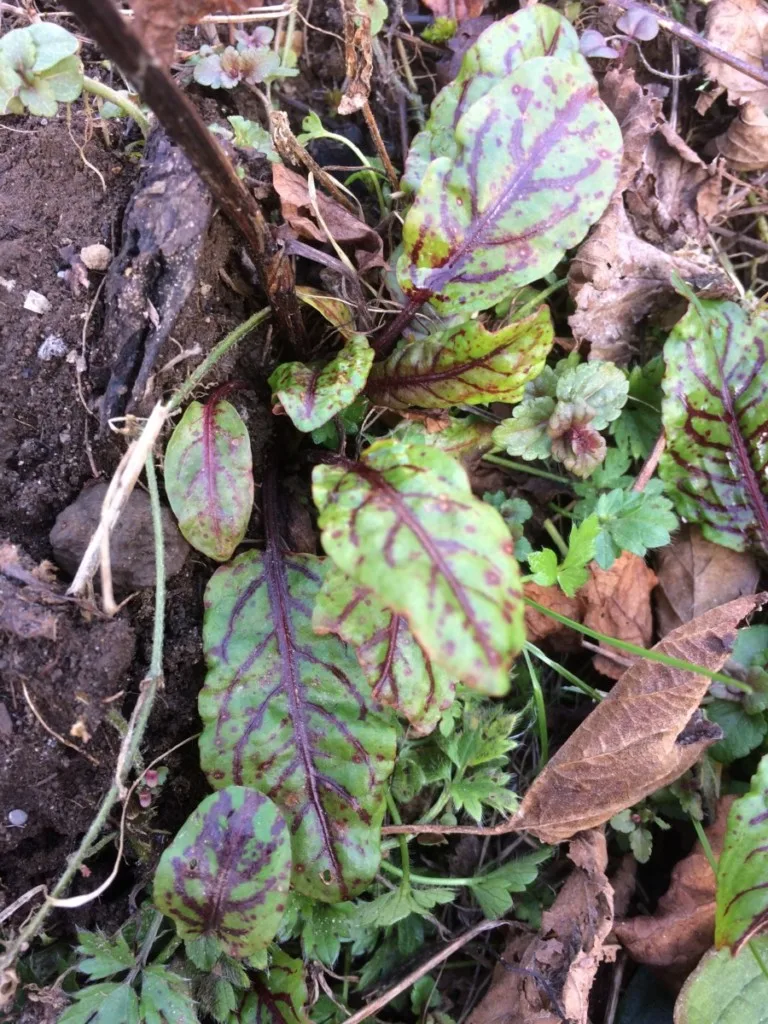
Common sorrel (Rumex acetosa) and sheep sorrel (Rumex acetosella) are both types of leafy green that you can find in spring. Both are at their best in spring, soon after the growth season begins, though can also be harvested later in the season. Roots can also be harvested in early spring for herbal medicinal reasons.
Young sorrel is delicious in salads, and the older leaves can be used as a leaf vegetable or pot herb in a range of recipes.
Foraging Common Sorrel and Other Docks @ wildplantguide.com.
17. Curly Dock/ Yellow Dock (Rumex Crispus) & Broad Leaf Dock
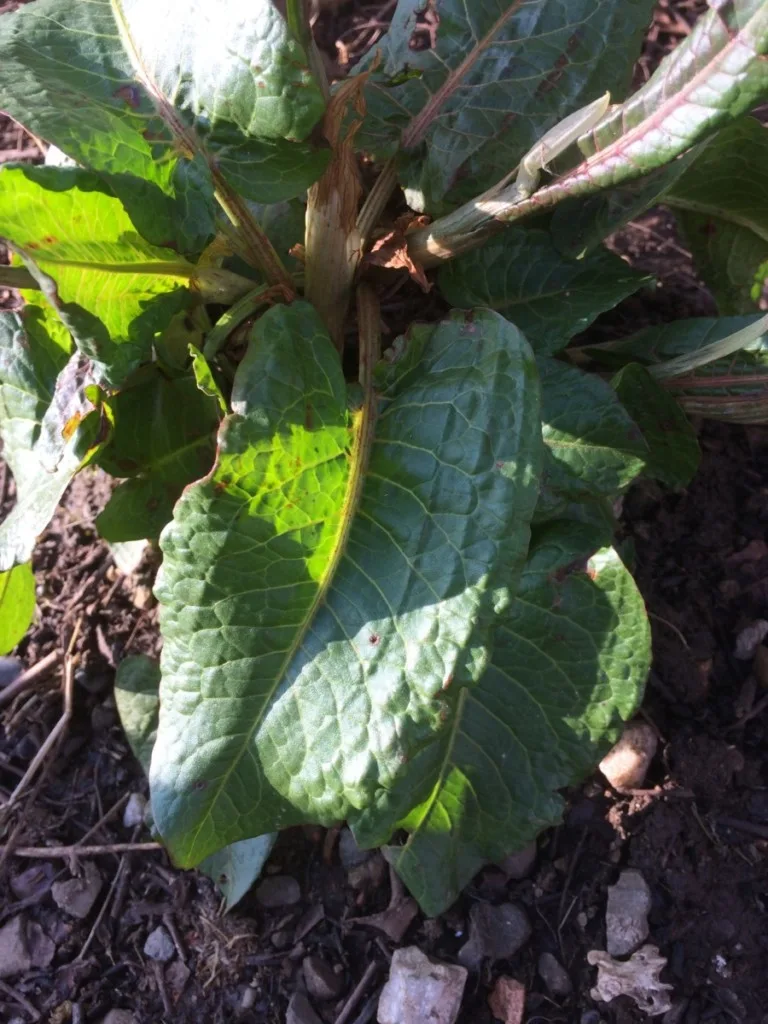
One related plant is curly dock or yellow dock (Rumex crispus). Greens, again, can be harvested throughout much of the year. But the greens are at their edible best in the spring. These, and the small leaves of the related broad leafed dock, can be used in moderation as a leaf vegetable, in much the same way as the leaves of plantain or other leafy edibles.
(Later in the year, the plants also produce a grain a little like buckwheat, which can be ground into a wild foraged flour.)
Foraging Yellow Dock @ practicalselfreliance.com.
18. Yarrow (Achilea millefolium)
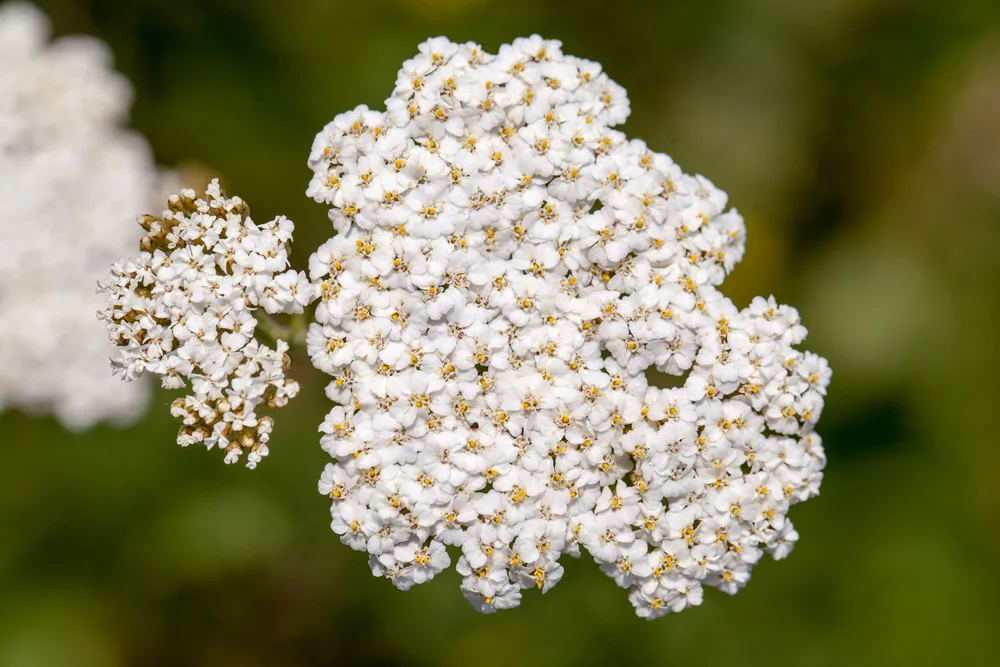
Yarrow is best known as a herbal medicine plant. But it also has limited application as an edible wild plant. In spring, though they are rather bitter, the young leaves can make a pleasant and healthy addition to a salad. These leaves are very rich in minerals. They are also used as a hops substitute, and as a preservative for beer.
Note, however, that extended use of this plant medicinally or in the diet can cause problems. It is also important to identify it correctly, as there are a number of lookalikes that cannot be eaten.
Yarrow @ fourseasonforaging.com.
19. Wild Asparagus (Asparagus officinalis)
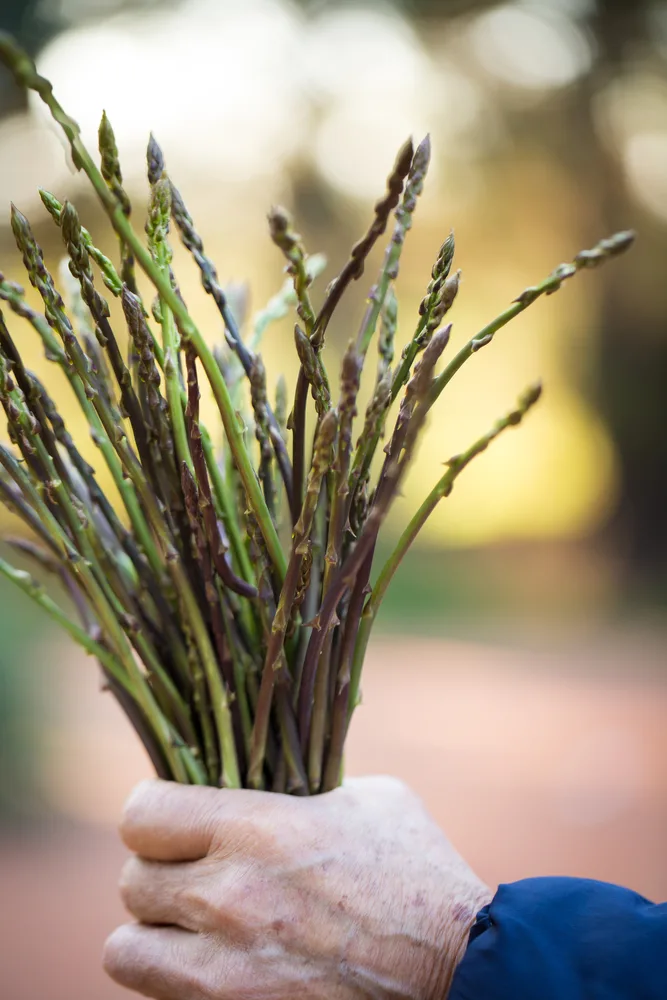
Though not technically wild but rather a farm and garden escapee, wild asparagus is a precious foraging delight in the areas where it is found.
This is exactly the same as the asparagus grown domestically and commercially, with the same refined taste. When foragers find some, they guard the secret carefully.
To find out more about this elusive edible, check out the link below:
Foraging Wild Asparagus @ honest-food.net.
20. Day Lily Shoots (Hemerocallis)
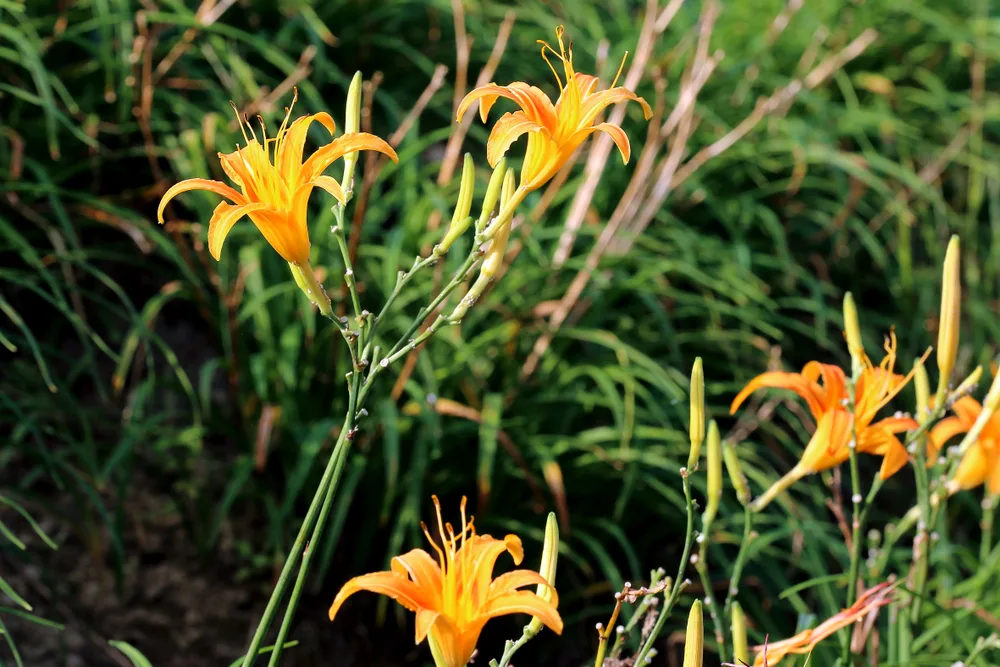
Many of those who have made forays into foraging may be familiar with eating the flowers of day lilies. But many are less familiar with the harvest that can be taken from these plants in early spring.
The shoots, when they first emerge and are less than 8 inches tall, are a delicious wild edible. These shoots are great in stir fries or with pasta.
Day Lilies @ motherearthnews.com
21. Hosta Shoots (Hosta ssp.)
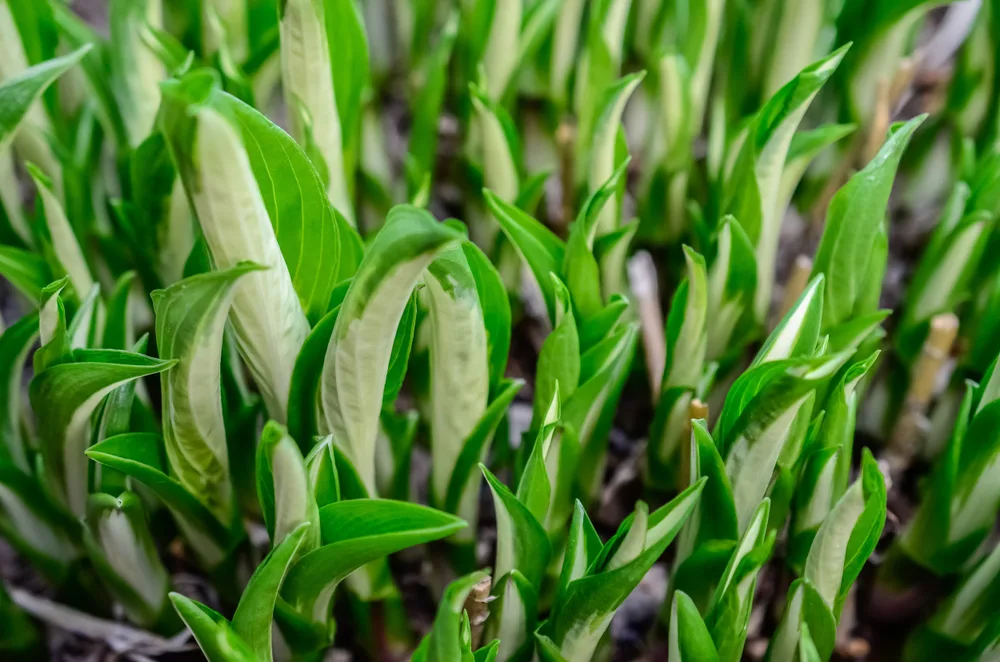
Hosta may be more likely found in your garden than the wild. But this is another edible plant of the season about which you may not be aware.
Again, the young, tender shoots, (collections of furled leaves called hostons) can be harvested and stir fried or used in a range of other ways. They are one of my favourite vegetables of the season.
Here’s our guide to growing and eating hostas.
22. Milkweed Shoots (Asclepias syriaca L)
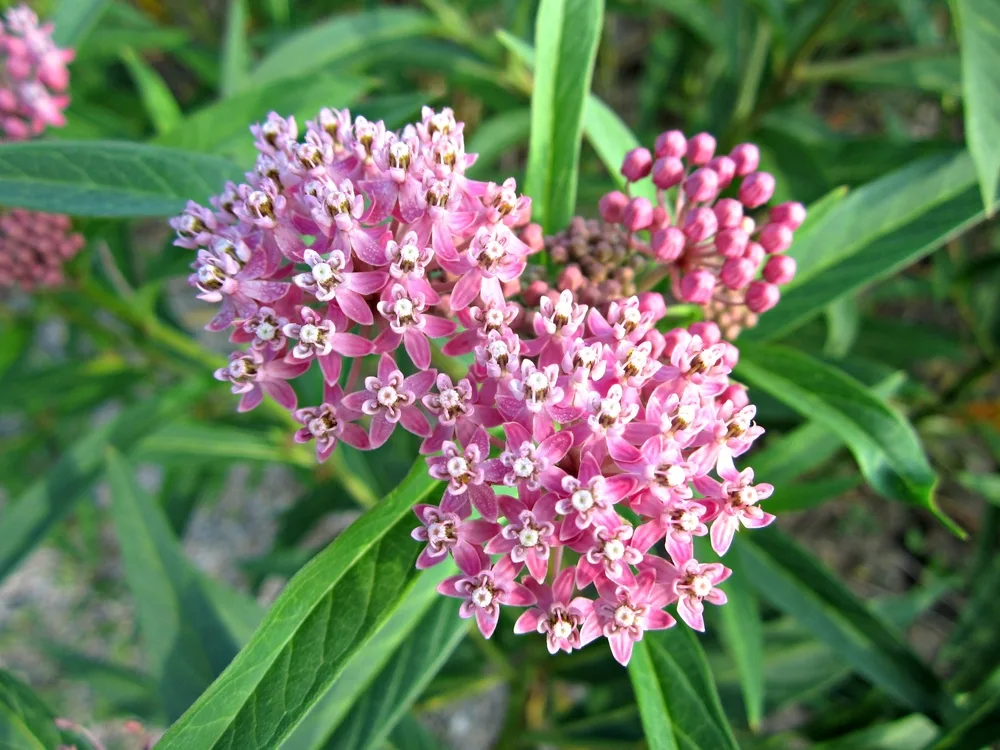
Though it can be a challenge to distinguish these shoots from those of dogbane, the young shoots of these plants are another spring delicacy. Unlike dogbane, the shoots of these plants are tender, juicy and, crucially, not at all bitter. While you should not eat too much milkweed, eating it in small quantities will not cause problems for most people.
To find out more about identifying and using milkweed, check out the link below:
Milkweed Shoots @ foragerchef.com.
23. Cattail Shoots (Typha)
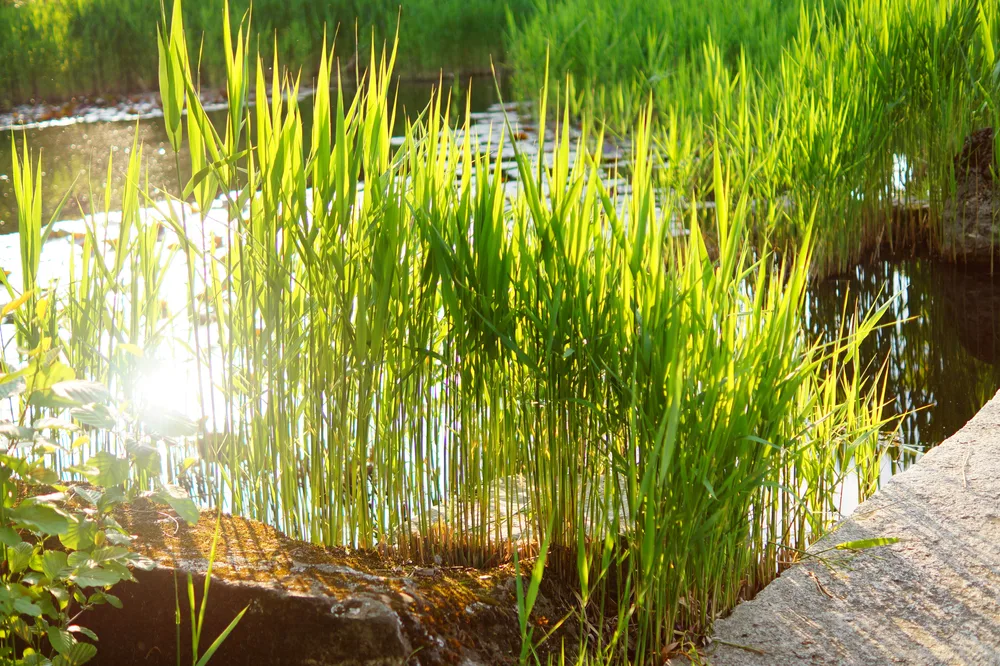
This plant is to be found almost everywhere across the US, and elsewhere. It grows alongside lakes, streams, marshes, swamps or in very wet ground.
If you are interested in foraging for this plant, it is very important to make sure you do not take it from areas with a lot of human activity, or where water could be polluted.
If you find a safe supply, however, the young shoots in spring can be picked and eaten either raw or cooked. In early spring, seek out the young white shoots coming out of the root, as these are the most tender. Note: the pollen can also later be harvested as a wild edible.
For more information on foraging for cattails, and how to use them, check out:
Foraging for Cattails @ chelseagreen.com.
24. Thimbleberry Shoots (Rubus parviflorus)
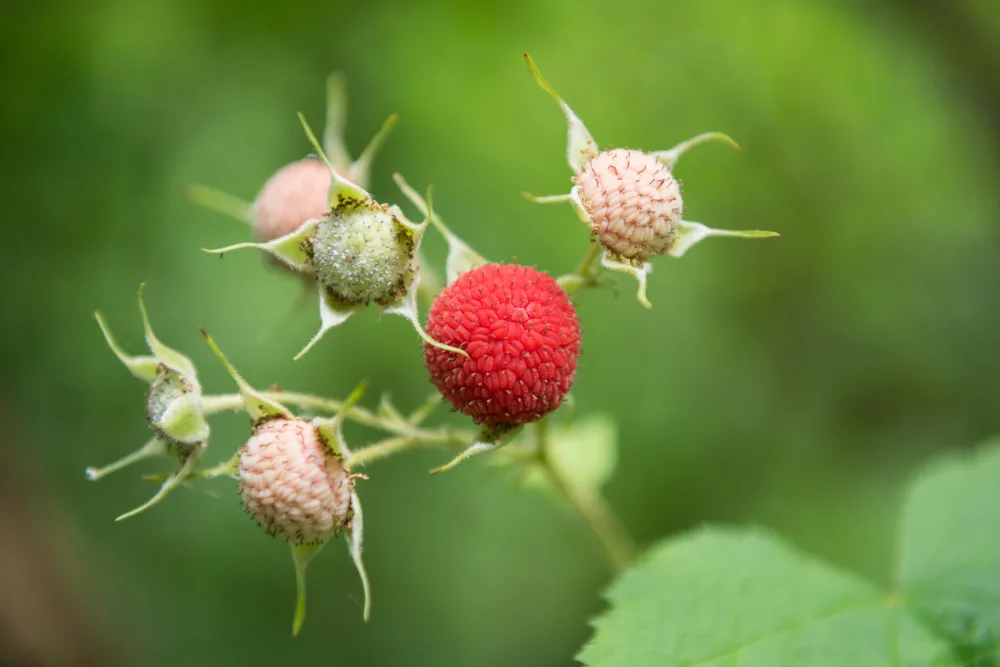
The thimbleberry is a familiar wild edible of the Pacific northwest. It is a relative of the raspberry that is best known for its red berries.
But what you may not know is that the plant not only provides a wild berry harvest later in the year, but also tender young shoots and leaves that can be eaten for salads early in the spring.
Thimbleberry @ thenorthwestforager.com.
25. Violets (Viola spp.)
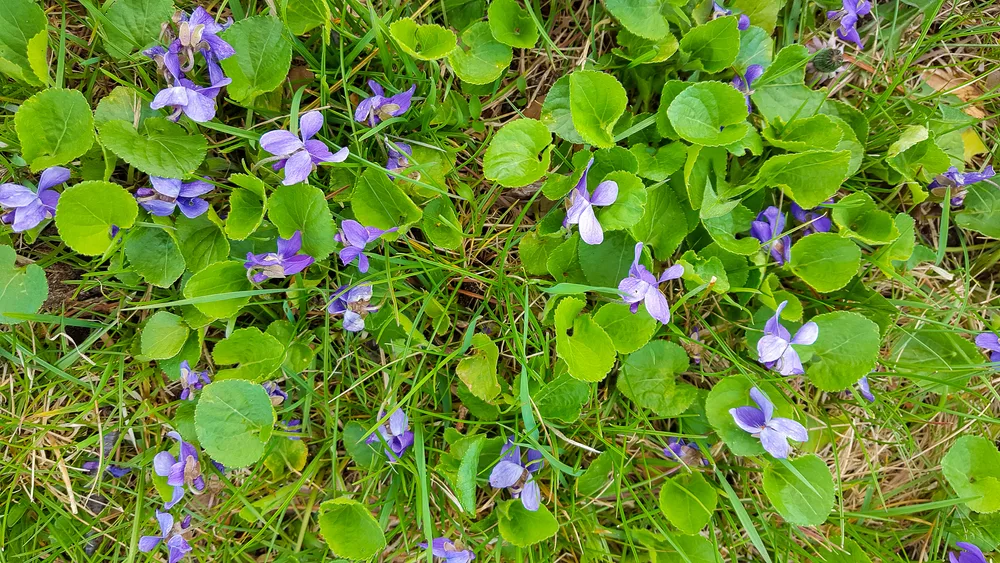
Though there are not as many edible flowers around in early spring as there are during the rest of the year, you may also like to keep your eyes open for violets.
There are a number of viola subspecies, wild and cultivated, that you could add to your early spring salads.
Violet Syrup @ RuralSprout.com
Foraging for Wild Violets @ growforagecookferment.com.
One more thing to mention about wild plants to forage for in early spring is that you should look up as well as looking down.
You should also check out my article on trees with edible leaves (which is soon to be published here on Rural Sprout), as these are also a great source of foraged greens when leaves first unfurl.
Of course, certain trees can also be harvested for their sap in spring. The maple is of course the most obvious example, though other trees can also be tapped, and their sap used to make syrups.
By now, you should begin to see that there are plenty of wild food sources out there. Of course, you always have to be careful when foraging.
But learning more about which wild foods you can eat throughout the year is a great way to become more resilient. It can be a good way to supplement your home-grown diet.

Get the famous Rural Sprout newsletter delivered to your inbox.
Including Sunday musings from our editor, Tracey, as well as “What’s Up Wednesday” our roundup of what’s in season and new article updates and alerts.


